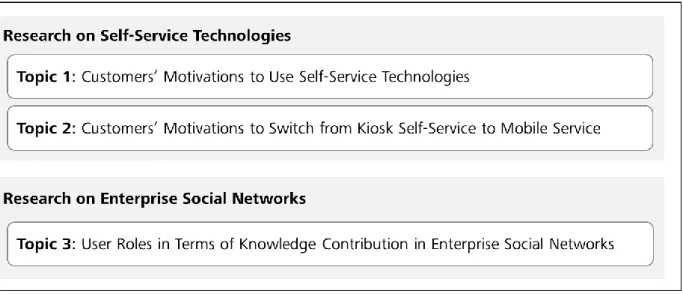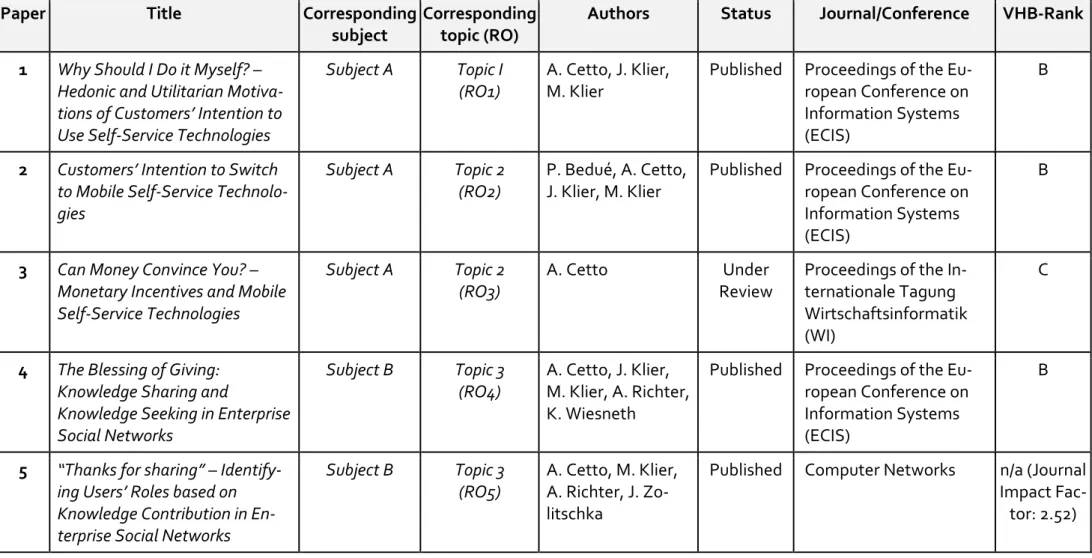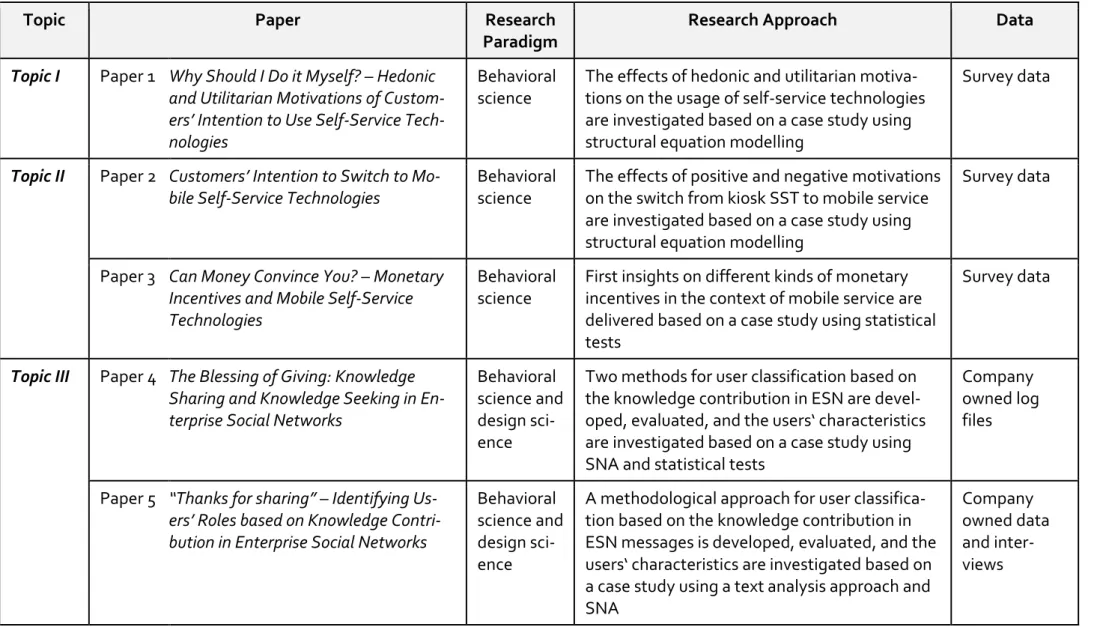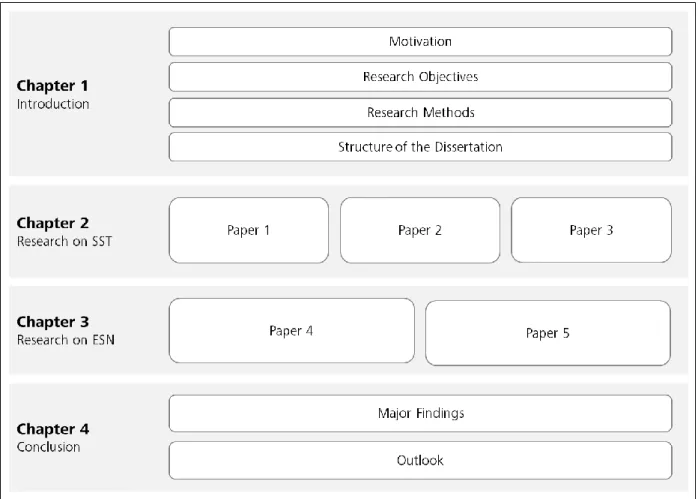Self-Service Technologies and Enterprise Social Networks – Motivations, User Roles, and Knowledge Contribution
Volltext
Abbildung




ÄHNLICHE DOKUMENTE
This is confirmed by the results of study 1 and 2, which demonstrate that perceived service quality as well as the intention to patronage a retail store is also relevant for
Cooperation between local authorities, citizens and service providers as a response to2.
issues (i.e. possible world) such that the two service descriptions accept a common contract. Satisfaction
call.addParameter("bean", qname, ParameterMode.IN); //register (passed) parameter for bean call.setReturnType(qname); //specify expected return type of web
Both QoS dimensions defined for the associated semantic service (i.e. requirements) and QoS dimensions monitored at runtime (i.e. offerings) are added to the service properties of
Based on the service catalogue and the service costs it is possible to systematically derive the right sourcing decisions aligned to the customer services and the service
Augmentation Research Center page 149.. You can now complete your command.. After considering your first statement, you decide to add more to it. Two ways to
Die Studienrichtung Service Innovation and Design bietet Ihnen eine solide betriebswirtschaftliche Grundausbildung, damit Sie erfolgreich im Geschäfts- umfeld agieren können..
